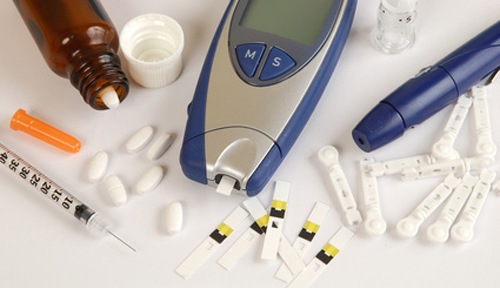Salk Institute scientists have harnessed stem cell technology to generate the first human insulin-producing pancreatic cell clusters that can evade the immune system. Generated from induced pluripotent stem cells (iPSCs), these “immune shielded” human islet-like organoids (HILOs) controlled blood glucose following transplantation into a mouse model of diabetes, without the use of immunosuppressive drugs. The researchers suggest the achievement represents a major advance in the quest for a safe and effective treatment for type 1 diabetes (T1D), which impacts an estimated 1.6 million people in the United States, at a cost of $14.4 billion annually.
“Most type 1 diabetics are children and teenagers,” said Salk professor Ronald Evans, PhD, holder of the March of Dimes chair in molecular and developmental biology. Evans is senior author of the team’s paper, which is published in Nature. “This is a disease that is historically hard to manage with drugs. We hope that regenerative medicine in combination with immune shielding can make a real difference in the field by replacing damaged cells with lab-generated human islet-like cell clusters that produce normal amounts of insulin on demand.”
Evans and colleagues reported on their development in a paper titled, “Immune-evasive human islet-like organoids ameliorate diabetes.”
Type 1 diabetes is a lifelong condition that is challenging to manage, even with the availability of automated devices that deliver insulin to regulate blood sugar. Transplants of pancreatic beta islets from donor tissue can provide a cure, but require patients to take life-long immunosuppressing drugs, which carry serious risks. For decades, researchers have sought a better way to replenish lost pancreatic cells. “The ability to generate glucose-responsive human β-cells suitable for transplantation has the potential to substantially improve patients’ lives,” they wrote.

The Evans team then discovered a genetic switch called ERR-gamma that, when flipped, effectively “turbo-charges” the cells. “… we previously demonstrated that the nuclear estrogen-related receptor γ (ERRγ) drives a postnatal metabolic maturation program necessary for β-cell glucose-stimulated insulin secretion (GSIS),” they commented. “When we add ERR-gamma, the cells have the energy they need to do their job,” added Salk senior staff scientist and co-author Michael Downes, PhD. “These cells are healthy and robust and can deliver insulin when they sense high glucose levels.”
A critical part of the newly reported study was the development of an approach to growing the beta-like cells in a three-dimensional environment that approximates the human pancreas. This gave the cells an islet-like property. Importantly, the team discovered that a protein called WNT4 was able to turn on the ERR-gamma-driven maturation switch. This combination of steps generated the functional HILO cell clusters that mimicked human islets. “Notably, the identification of WNT4 as a metabolic maturation factor enabled the production of functional HILOs in fully chemically defined medium,” the scientists reported. They designated the WNT4-treated organoids wHILOs.
Next, the team tackled the complex issue of immune rejection. Tissue transplants generally require the use of lifelong immune-suppressive therapies to protect the tissue from being attacked by the immune system. However, immunosuppression also increases the risk for infections. Inspired by the successes of immunotherapy drugs for cancer, the team showed that the checkpoint protein PD-L1 protected the transplanted cells. “By expressing PD-L1, which acts as an immune blocker, the transplanted organoids are able to hide from the immune system,” said first author Eiji Yoshihara, PhD, a former staff scientist in the lab.
Yoshihara then developed a method to induce PD-L1 in HILOs with short pulses of the protein interferon gamma. When transplanted into diabetic mice, these immune-evasive HILOs enabled sustained blood glucose control in diabetic mice with healthy immune systems. “This is the first study to show that you can protect HILOs from the immune system without genetic manipulation,” Downes explained. “If we are able to develop this as a therapy, patients will not need to take immune-suppressing drugs.”

The authors acknowledged that more research will be needed before their system can be advanced to clinical trials. The transplanted organoids will need much more preclinical testing to confirm that their effects are long-lasting. Additional research will also have to be carried out to ensure the technology is safe and effective to use in humans. Nevertheless, the scientists concluded, “The generation of glucose-responsive islet-like organoids that are able to avoid immune detection provides a promising alternative to cadaveric and device-dependent therapies in the treatment of diabetes.” Evans further suggested, “We now have a product that could potentially be used in patients without requiring any kind of device.”



